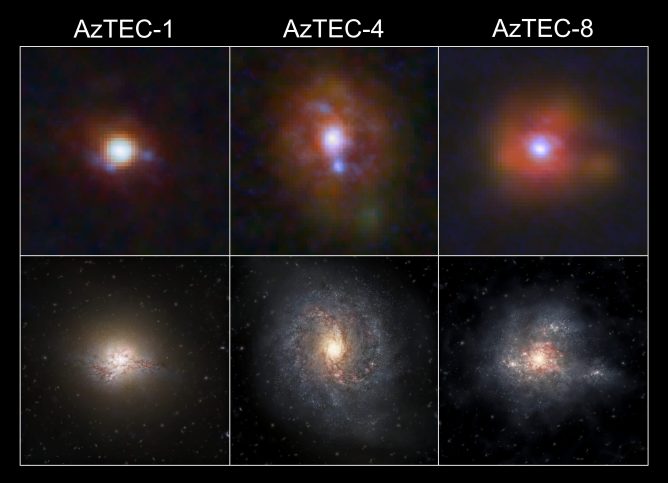Researchers using the Atacama Large Millimeter/submillimeter Array (ALMA) have teased out the faint signal of a new organic molecule lurking in interstellar space. The molecule, known as iso-propyl cyanide (i-C3H7CN), is a variant (isomer) of a molecule already known to be quite prevalent in space.
The key difference between the two is that the carbon backbone upon which the molecule is built is “branched” in this newest detection. This distinction is very significant, according to the researchers, because it suggests that branched carbon-chain molecules may be fairly abundant in the interstellar medium.
In this case, the “iso” version of the molecule is almost half as abundant as the normal form. “The enormous abundance of iso-propyl cyanide suggests that branched molecules may in fact be the rule, rather than the exception, in the interstellar medium,” says Robin Garrod, an astrochemist at Cornell University.
Models of how these molecules form suggest they are produced either within or on thin veneers of ice that coat interstellar dust grains. Creating iso-propyl cyanide in such a way appears to require the addition of certain “functional” groups of carbon to the growing molecule. “This type of molecular manufacturing bodes well for the presence of amino acids — a precursor of proteins — in similar environments,” said Arnaud Belloche with the Max-Planck Institute for Radio Astronomy in Bonn, Germany. “A branched structure is a key characteristic of amino acids and among the amino acids found in meteorites, the most abundant isomers are the branched ones,” Belloche added.
For Stéphane Léon, ALMA astronomer, “ALMA’s high sensitivity was key to this finding, enabling the detection of these weak emissions in minutes while other telescopes took days to do this.” And he adds: “This discovery, which is fundamental for interstellar chemistry and the study of the origin of the Universe, is undeniable evidence of the advances that ALMA can contribute to astronomy. This confirms its ability to detect prebiotic molecules, the precursors to life, even though it is not fully operational. This makes us very optimistic about what ALMA can do in the future.”
The results are published in the journal Science.
Figure. Dust and molecules in the central region of our Galaxy: The background image shows the dust emission in a combination of data obtained with the APEX telescope and the Planck space observatory at a wavelength around 860 micrometers. The organic molecule iso-propyl cyanide with a branched carbon backbone (i-C3H7CN, left) as well as its straight-chain isomer normal-propyl cyanide (n-C3H7CN, right) were both detected with the Atacama Large Millimeter/submillimeter Array in the star-forming region Sgr B2, about 300 light years away from the Galactic center Sgr A*.
Credits: MPIfR/A. Weiß (background image), University of Cologne/M. Koerber (molecular models), MPIfR/A. Belloche (montage).










